
Be a Land Steward.
Sign up for Greenhouse Gases -
a weekly-ish newsletter that will teach you the science behind regenerative gardening, with action steps to help you make a difference in your backyard.

Sign up for Greenhouse Gases -
a weekly-ish newsletter that will teach you the science behind regenerative gardening, with action steps to help you make a difference in your backyard.

It can be a challenge to grow a productive garden if your growing space receives a lot of sunlight during the day. It’s frustrating to look at seed packets of tasty vegetables or interesting herbs and see a “full sun” requirement.
The good news is: there are actually quite a lot of herbs and vegetables that can provide food for you and your family. In some instances, that partial shade is actually a blessing in disguise, as some plants really suffer in the sunshine.
Once you discover what plants actually thrive and produce harvests in low-light gardens, you will see that your space can actually be quite productive!
Get one step closer to self-sufficiency, even in shaded spots. Here’s a full list of vegetables and herbs that do well in part shade zones of your garden.
In this guide, you'll learn:
I created these spreadsheets below to help you get excited about the variety of food crops you can grow in areas that recieve shade in your garden. It can feel like the full sun gardens get all the fun, but as you'll see, there are a ton of options to choose from.
Continue past the spreadsheet to see descriptions of each plant and learn more about its growing requirements.
This list of shaded garden ideas includes:
Filter by plant type, shade level, or sort through annuals and perennials.
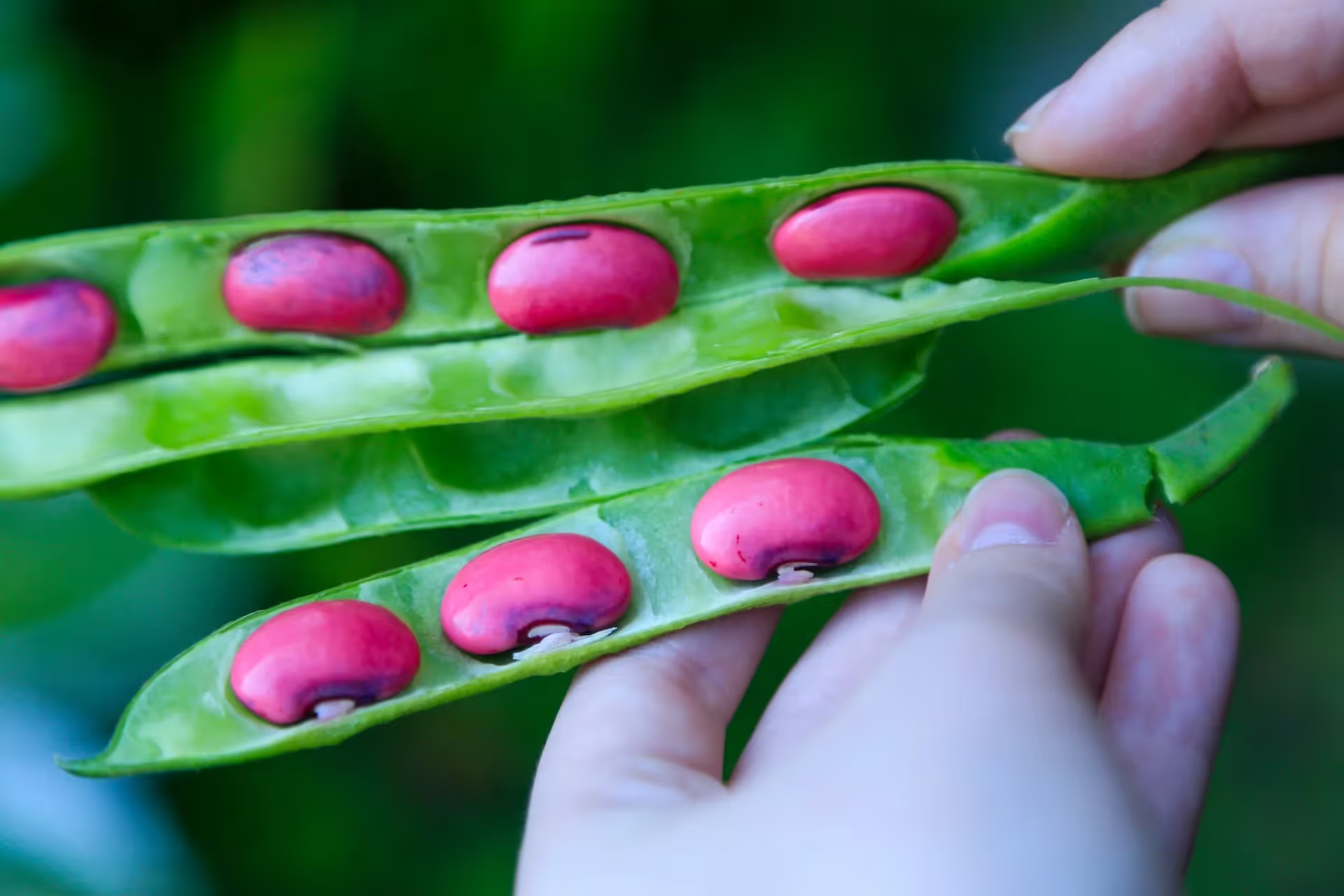
Beans (Part Sun):
Beans can thrive in part sun conditions, with about 5-6 hours of sunlight. Be sure plants get ample warmth and drainage to prevent rot, as noted by Uprising Organics.
They are a great choice for permaculture systems due to their ability to fix nitrogen in the soil, which benefits nearby plants. Try Provider Bush, Scarlet Runner, or Fava Beans.
Beets (Part Shade):
Beets can grow in part shade with 3-6 hours of sunlight. These root vegetables are not only versatile in the kitchen but also their leaves can be used as mulch or a treat for chickens.
Golden beets are my favorite variety - they are sweet and savory without an intense irony-earthy flavor.
Broccoli (Part Shade):
This cool-season crop prefers part shade, especially in the summer. Perfect for areas that receive 3-6 hours of sunlight. Broccoli is highly valued for its nutrient-dense heads and side shoots.
Brussels Sprouts (Part Shade):
Brussels sprouts are another vegetable that can be grown in part shade. They do have quite a lengthy time to maturity, so I would only grow these in a shaded garden if I absolutely loved homegrown brussels sprouts, and didn’t have any slug or cabbage moth issues.
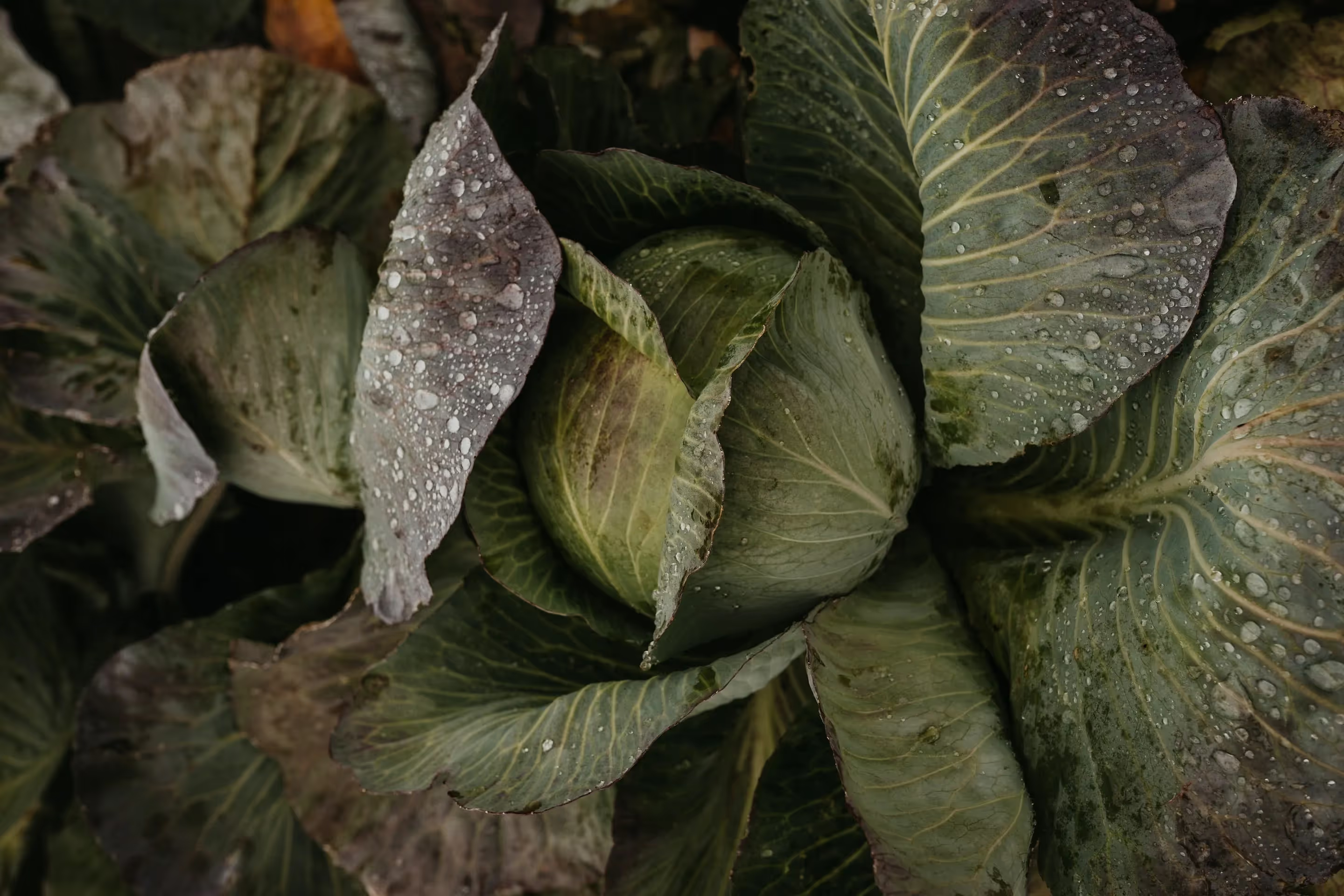
Cabbage (Part Shade):
Cabbage can handle part shade with 3-6 hours of sunlight daily. In fact, cabbage can turn bitter if it’s exposed to too much heat and sunlight. It’s a staple in the self-sufficiency garden, since it stores well through the winter and is quite nutritious.
Carrots (Part Shade):
Carrots can get by with 4-6 hours of sunlight. Plant in loose rich soil, or in grow bags. My best carrot harvests have been from grow bags in part shade!
Caucasian Mountain Spinach (Part Shade to Full Shade):
This leafy green is an excellent choice for full shade to part shade locations. It needs as little as 2-3 hours of sunlight.
It's a perennial, which aligns with permaculture principles of sustainability.
Cauliflower (Part Shade):
Cauliflower prefers cooler temperatures and can do well in part shade scenarios. This plant's large leaves shade the soil to retain soil moisture and suppress weeds.
Collards (Part Shade):
Collards are hardy and can grow in part shade. They also don’t mind full sun, cold weather, or heat. They are a good source of greens year-round and can be harvested progressively for sustained yields.
Good King Henry (Part Shade to Full Shade):
An excellent perennial vegetable, Good King Henry thrives in part to full shade. It provides a steady supply of leaves that can be used like spinach.
Green Onions (Part Shade):
Green onions, also known as scallions, are adaptable and can flourish in part shade. They are perfect for intercrop companions, because they take up minimal space and can be harvested throughout the season.
Pro tip: Keep the roots in the ground, and trim back greenery to the base when harvesting. The plants will regrow many times over for fast harvests.
Hog Peanut (Dappled to Full Shade):
According to Interwoven Permaculture, hog peanuts are nitrogen fixers. A native vine, the hog peanut favors dappled to full shade and is a great ground cover in forest garden systems. Produces edible tubers.
Kale (Part Shade):
Kale is a versatile green that can grow in part shade, although it may produce smaller leaves if sunlight hours are less then 4. It's a nutritious addition to any self-sufficient garden.
If you’re able to get it established, try perennial kale - it’s a permaculture favorite!
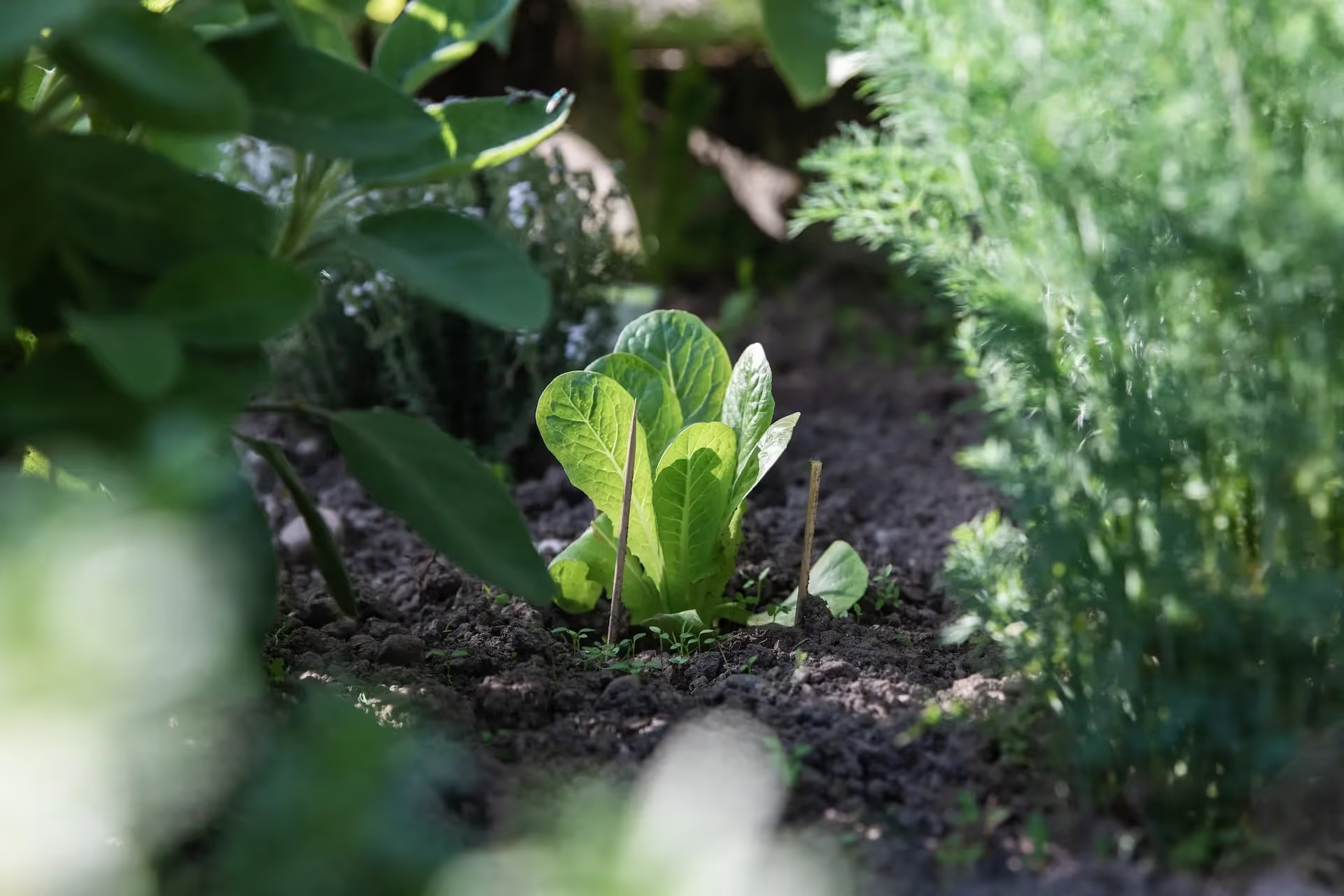
Leafy Greens (Part Shade to Full Shade):
Many leafy greens, such as lettuce and spinach, can tolerate part shade to full shade.
If you have an area with only 2-3 hours of sunlight, try leafy greens in that spot for harvests in the summer when other sunny gardens won’t be able to grow this nutritious vegetable.
Leeks (Part Shade):
Leeks can be grown in part shade with 3-6 hours of sunlight. They are a great option, and need little maintenance and to provide a robust flavor in meals.
Mashua (Part Shade):
Mashua is a tuber crop related to nasturtiums, according to Planting Justice. It works well in part shade environments in zones 8-12. Both the tubers and the leaves are edible.
Mushrooms (Full Shade):
Don’t forget about mushrooms! This crop is ideal for full shade conditions and can be cultivated in shady corners of the garden or on decomposing logs as part of a permaculture system.

Peas (Part Sun to Part Shade):
Peas enjoy cool weather and can flourish in part sun to part shade. I tend to plant a crop of peas in a shady area of my garden in June. There, they perform much better than in full sun during the heat of summer.
As legumes, they enrich the soil with nitrogen and can be a great cover crop or utilized in crop rotations.
Plum Shiso (Perilla) (Part Shade):
This aromatic herb can grow in part shade. It's not only used for its flavor but also for its ornamental qualities - it’s such a gorgeous purple color!
Potatoes (Part Sun to Part Shade):
Potatoes are adaptable and can grow in part sun to part shade.
In my garden, I noticed no difference in yields of potatoes planted in full sun vs. part shade. Try this staple in your part shaded garden for extra food security.
Radishes (Part Shade):
Quick to mature, radishes can grow in part shade areas. They are a great crop for beginners and can be interplanted with longer-to-mature vegetables, like potatoes or broccoli.
Ramps (Full Shade to Dappled Sunlight):
Wild leeks, or ramps, are native to forests. These plants prefer full shade to dappled sunlight. They are a gourmet favorite and can serve as a perennial staple in woodland gardens. Twisted Tree Farm notes the they do best under sugar maple trees. Since they are indigenous to the east coast of the United States, ramps may not do well in areas with summer drought.
Rapini (Part Shade):
Also known as broccoli raab, rapini produces multiple harvests of small baby broccoli. Rapini does well in part shade, especially in the heat of summer. The leaves also make a great alternative to kale in stir-fries!
Swiss Chard (Part Shade):
Swiss chard is quite shade-tolerant and can grow in part shade. Its colorful stems add beauty to the garden, and it provides a continuous harvest of nutritious leaves. I’ve been able to keep Swiss Chard in the ground for two years with continual harvests before it finally went to seed.
Turnips (Part Shade):
Turnips can succeed in part shade and provide both edible roots and greens. They are a good choice for overwintering in the soil - they actually store better in ground than in the fridge. As a bonus, they can improve soil structure with their deep taproots.
American Ginseng (Part Shade to Full Shade):
American Ginseng grows well in part to full shade. They are native to cool, forested environments. This herb is sought after for its medicinal roots, making it a valuable addition to a sustainable garden.
Black Cohosh (Part Shade to Full Shade):
Black Cohosh thrives in part to full shade. This woodland herb is known for its therapeutic properties, particularly in women's health. It features tall, wand-like flower spikes that can add vertical interest to a shade garden.
Bronze Fennel (Full Sun to Part Shade):
While Bronze Fennel prefers full sun, it will tolerate part shade. Its gorgeous and unique bronze-purple foliage and beneficial attraction for pollinators make it an ornamental and edible choice for garden perimeters.

Calendula (Full Sun to Part Shade):
Calendula is happiest in full sun but will still bloom in part shade. The flowers are great in tea, and have medicinal properties. Beneficial insects like them too!
Catnip (Full Sun to Part Shade):
This hardy herb can grow in full sun to part shade. Catnip is not only loved by cats but also by gardeners - they attract beneficial insects to help with pest control. Makes an excellent tea as a traditional herbal remedy.
Chives (Full Sun to Part Shade):
Chives will grow well in full sun but can tolerate part shade. They're a perennial kitchen staple that can provide a mild onion flavor year after year. From its second year onwards, chives will also produce edible purple flowers.

Comfrey (Full Sun to Part Shade):
Comfrey is adaptable to a range of light conditions, and is known to thrive pretty much anywhere you place it.
Its deep roots mine minerals and improve soil health. Its leaves are excellent to add to compost and compost teas.
Lemon Balm (Full Sun to Part Shade):
Lemon Balm prefers full sun but can manage in part shade. It is valued for its fragrant, citrus-scented leaves that make a delicious tea and can help attract beneficial insects.
Mint (Full Sun to Part Shade):
Famous for its invasiveness, mint is a hardy herb that can grow just about anywhere. Regardless of where its planted, I’d recommend growing it in containers to control its potential spread.
Mushroom Plant (Part Shade to Full Shade):
Not a mushroom, but an herb! The Mushroom Plant has unique mushroom-flavored leaves. It's a rarity that can add both intrigue and flavor to a shaded herb garden.
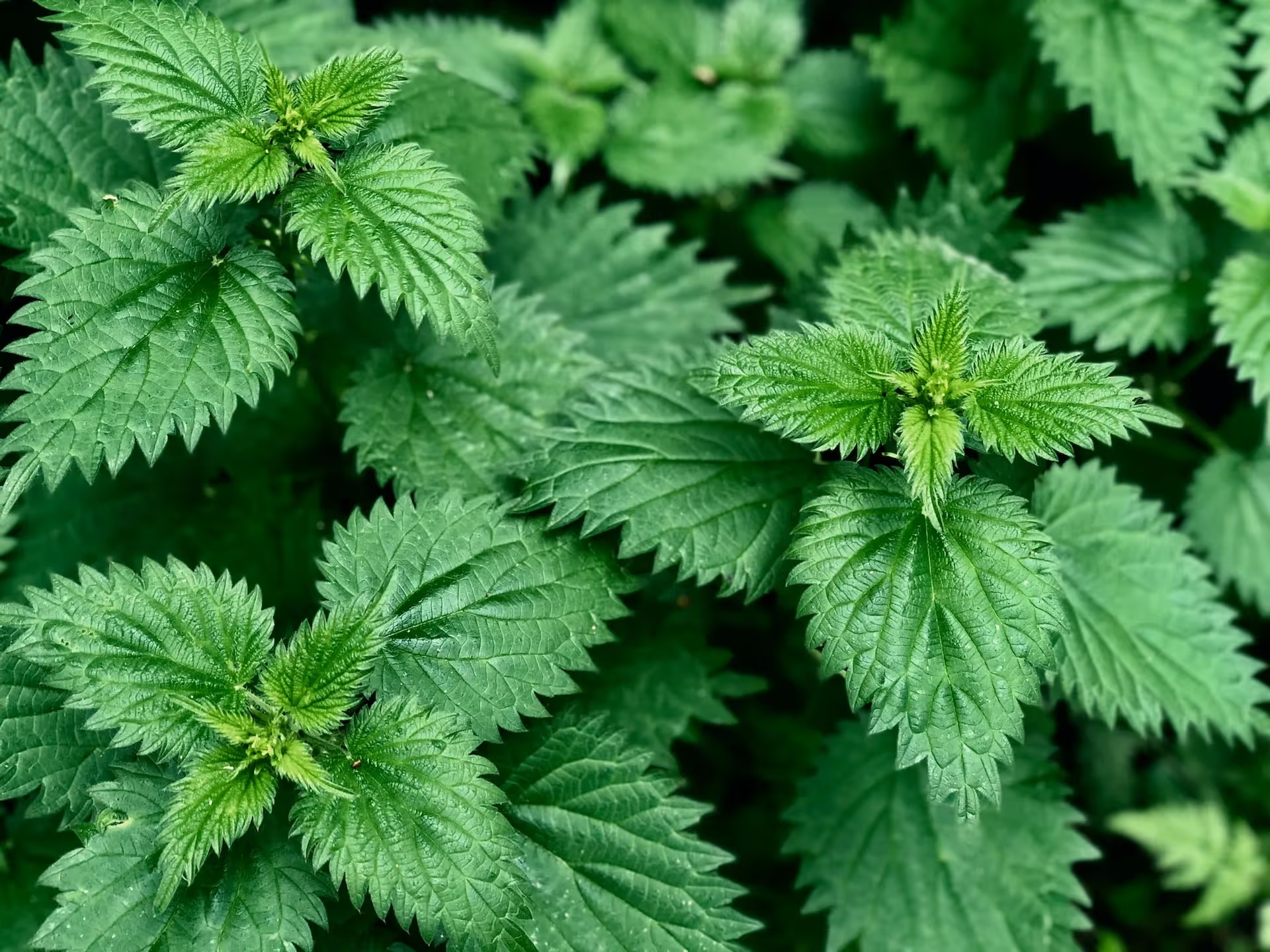
Nettles (Full Sun to Part Shade):
Stinging nettles can thrive in full sun to part shade. In fact, it’s often found in wooded areas with dappled sunlight. Nettles are nutrient-dense, have medicinal properties, and can be used to make a nitrogen-rich fertilizer for the garden.
Oregano (Full Sun to Part Shade):
Though oregano prefers full sun, it will still grow in part shade. It's a staple herb in Mediterranean cuisine and is treasured for its robust flavor and easy growth habit.
Parsley (Full Sun to Part Shade):
Parsley is versatile, and will grow in full sun to part shade. This biennial herb is rich in vitamins and can be used as a garnish, seasoning, or even a host plant for swallowtail butterflies.
Szechuan Pepper (Full Sun to Part Shade):
Szechuan Pepper is actually a deciduous shrub that prefers full sun but will tolerate part shade. It produces aromatic berries, which are used in Asian cuisines for their unique spiciness.
Spicebush (Part Shade to Full Shade):
A native shrub, Spicebush thrives in part shade to full shade and is notable for its fragrant leaves and berries, which can be used as a spice. It's also a host plant for spicebush swallowtail butterflies.
Spotted Beebalm, Monarda (Full Sun to Part Shade):
Also called Wild Bergamot, Spotted Beebalm can grow in full sun to part shade. It's beloved by pollinators for its showy, spotted flowers and by herbalists for its antiseptic properties.
Tarragon (Full Sun to Part Shade):
Known for its use in French cuisine, Tarragon grows well in full sun but can tolerate part shade. Its delicate, anise-flavored leaves are perfect for culinary use, especially in sauces and chicken dishes.
Tea, Camellia sinensis (Part Shade to Full Shade):
Tea plants can prosper in part shade to full shade conditions. They require a slightly acidic soil and can be harvested for green, black, or oolong teas. A unique addition to any self-sufficient garden.

Thyme (Full Sun to Part Shade):
Thyme is a drought-resistant herb that favors full sun but can grow in part shade. It's a culinary essential and a fantastic ground cover. If you plant this as a lawn replacement, its delightful scent will waft upwards when you walk on it.
Valerian (Full Sun to Part Shade):
Valerian can do well in full sun or part shade. It's primarily grown for its root, which is utilized in herbal medicine. The plant also sports pretty scented flowers.
Akebia (Part Shade to Full Shade):
Akebia thrives in shaded areas, so it’s perfect for the understory of a permaculture food forest.
Aronia (Full Sun to Part Shade):
Aronia prefers full sun but can tolerate partial shade. An interesting shrub for shady landscapes.
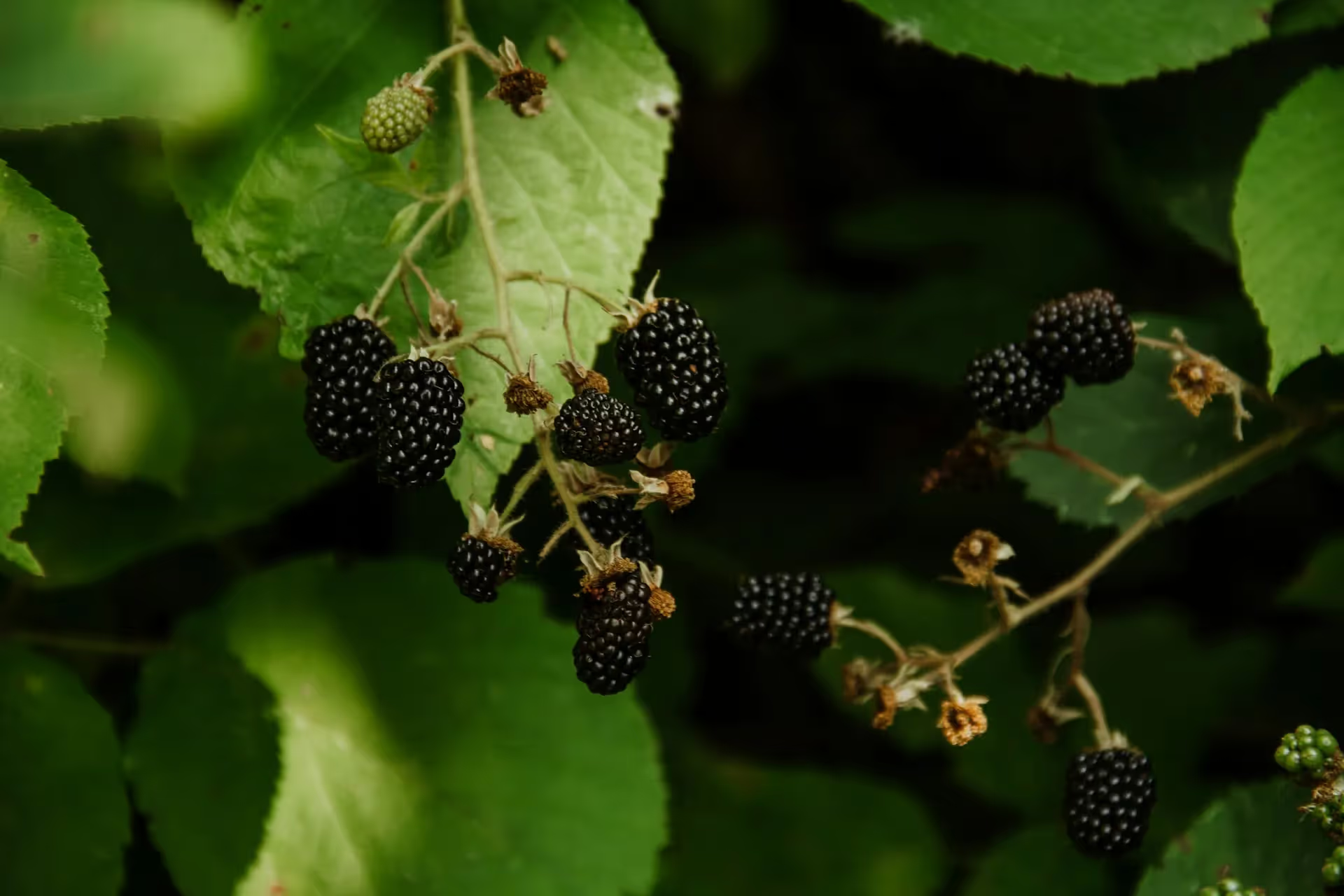
Blackberry (Full Sun to Part Shade):
Blackberries often make themselves at home in the partly-shaded areas on the edge of forests. They do enjoy facing west, but settle in snug up against the treeline.
Cherry (Full Sun to Part Shade):
Cherries thrive in full sun but can tolerate partial shade or dappled light conditions. The blossoms of cherry trees add a stunning beauty to the garden in spring, and are a food source for a slew of beneficial insects.
Chilean Wintergreen (Shade to Part Shade):
Chilean Wintergreen is well-suited for shady areas. It acts as ground cover, and the edible berries are quite delicious!
Currant (Full Sun to Part Shade):
Currants can thrive in part shade to dappled sunlight. They are a delicious food source to add to a partly shaded area of your garden.
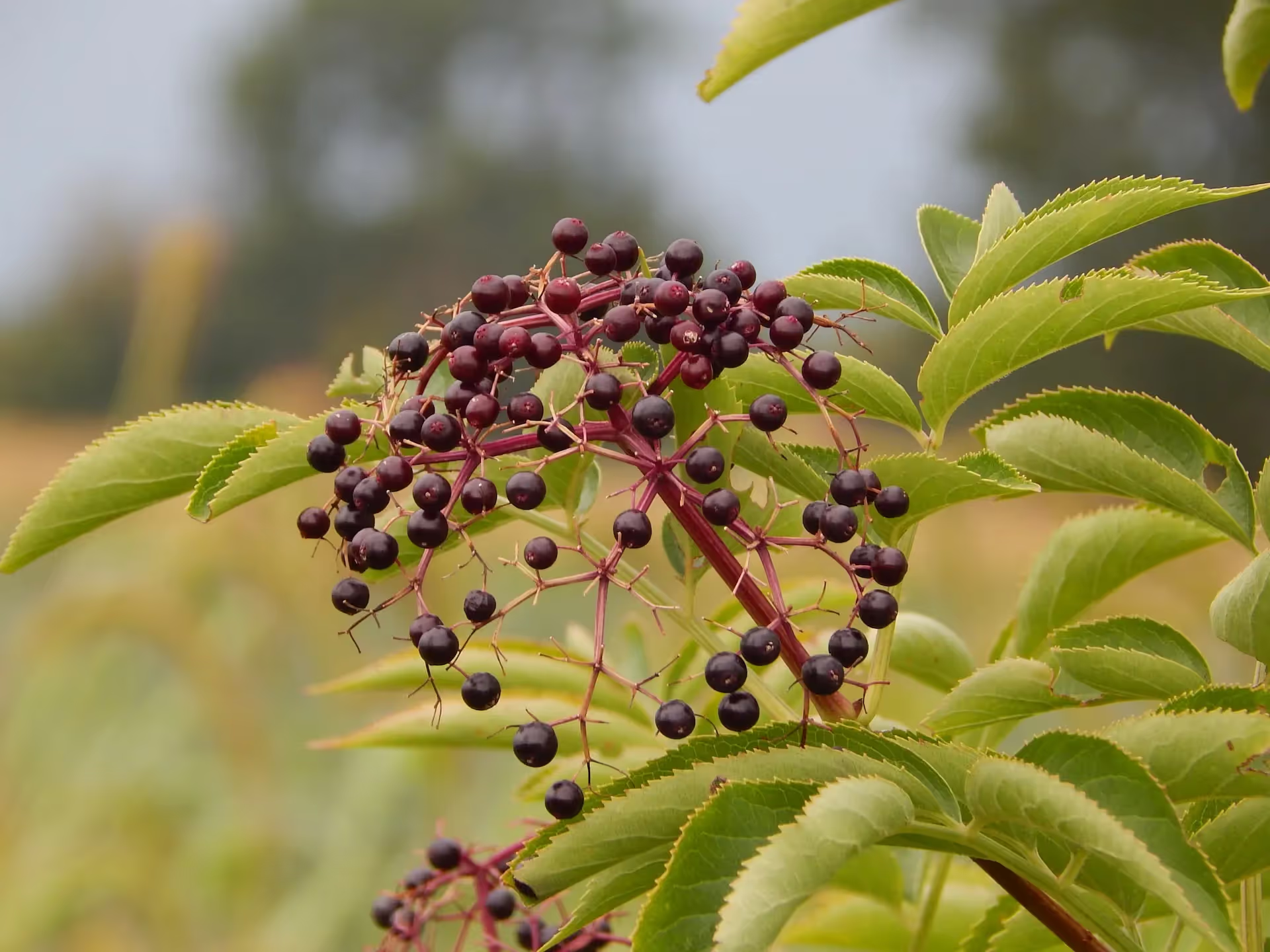
Elderberry (Full Sun to Part Shade):
Elderberries are adaptable and can grow in both full sun and partial shade. In fact, they are often found on the edges of forests or in dappled light areas in the wild.
Gooseberry (Full Sun to Part Shade):
Gooseberries can tolerate partial shade, and are perfect for forested edges in permaculture gardens. A delicious treat that is almost impossible to access fresh unless you grow it yourself.
Hackberry (Full Sun to Part Shade):
Hackberry trees are adaptable to various light conditions, including partial shade.
Hardy Kiwi (Full Sun to Part Shade):
Hardy kiwi plants are a vining plant that can produce fruit in cold climates and partly shaded conditions. While the fruit of hardy kiwi are smaller than the kind you’ll find in the grocery store, the fruit is still a delight to eat.
Hawthorn (Full Sun to Part Shade):
Hawthorn trees can tolerate partial shade, and you’ll often find them growing in dappled light areas of woodlands. Their berries, leaves, and flowers are utilized by herbalists, pollinators, and wildlife alike.
High Bush Blueberry (Full Sun to Part Shade):
High bush blueberries prefer full sun but will thrive in part shade and forest edges, especially in warmer climates.
Highbush Cranberry (Full Sun to Part Shade):
Highbush cranberries can adapt to partial shade, and contrary to popular belief, do not need a marshland to grow!
Honeyberry (Part Shade to Full Sun):
Honeyberries are often planted in permaculture food forest systems in part shade. Plant two varieties of honeyberries for bigger harvests. Also known as haskap.
Huckleberry (Part Shade to Full Sun):
Huckleberries are evergreen understory plants, that are naturally found in partly shady conditions.
Japanese Raisin Tree (Full Sun to Part Shade):
Japanese raisin trees are unique additions to any food forest garden. According to Planting Justice, they can tolerate partial shade. Once their fruit is dried, they make an interesting addition to oatmeal cookies. Find Japanese Raisin Tree at Planting Justice.
Lingonberry (Shade to Part Shade):
Lingonberry flavored sweets are hard to come by in the United States, except perhaps at Ikea. As Raintree Nursery mentions, they are a favorite of those in Scandinavia. Unlike many other fruit crops, lingonberry can produce two distinct harvests - one during the summer and one in the late fall. Lingonberries prefer shaded areas, and fit into understory areas of the garden.
Medlar (Full Sun to Part Shade):
Medlar trees are more familiar in Europe, but they can also grow well in the United States. Planting Justice notes that they can grow in partial shade, and will reach up to 12 feet in height.
Oregon Grape (Full Sun to Full Shade):
Oregon grapes are adaptable, thriving in full sun to full shade. In my backyard, the plants that get 2-3+ hours of sunlight produce the most flowers and fruit when compared with their full shade counterparts. However, the full shade plants do offer evergreen leaves which protect the forest floor.
Oso Berry (Shade to Part Shade):
Oso berries are well-suited for shaded areas. They aren’t the best plant for harvesting, but your local wildlife will appreciate their flowers and fruit.
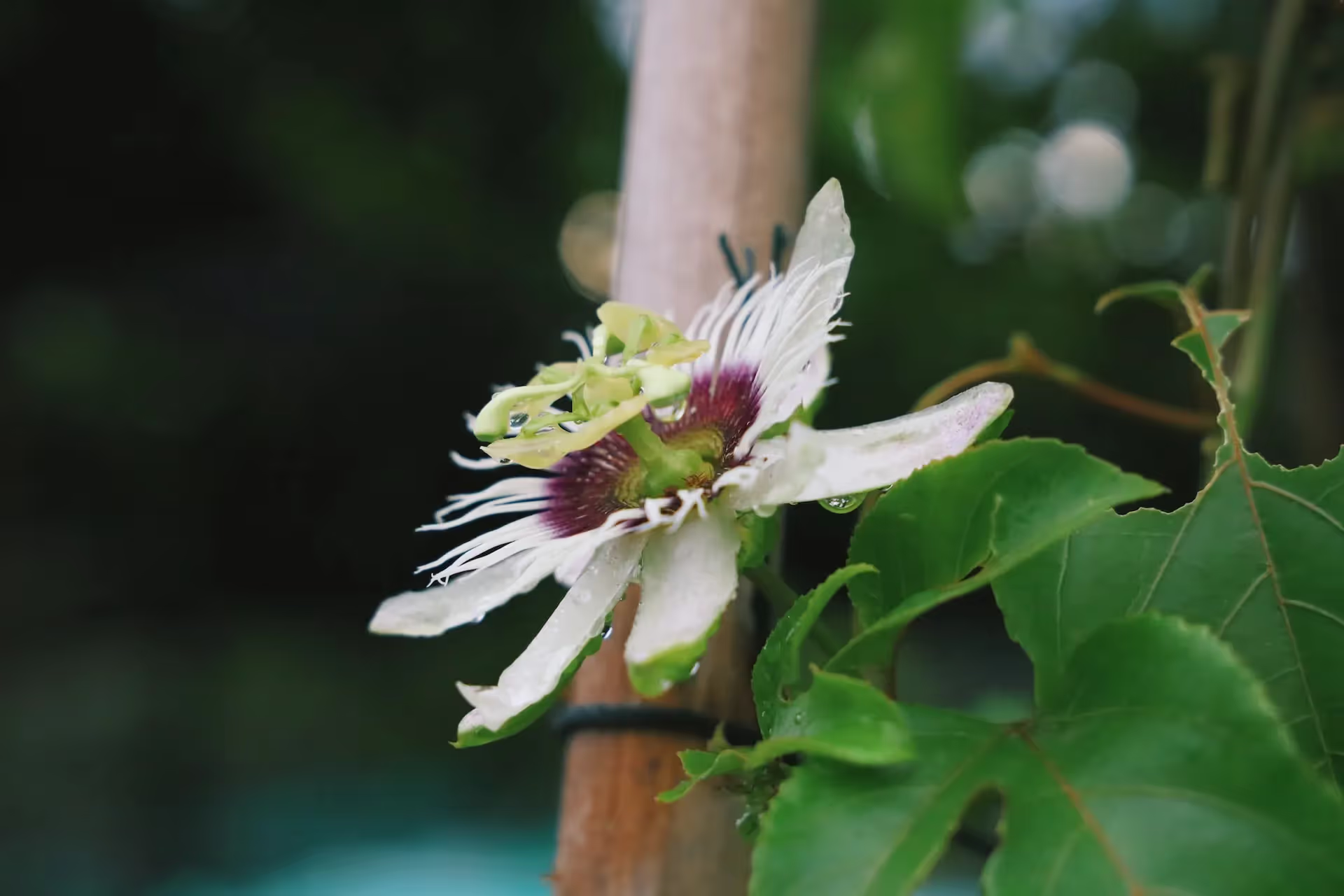
Passionflower (Full Sun to Part Shade):
Passionflowers can tolerate partial shade, and will thrive in warmer climates.
Pawpaw (Part Shade to Full Sun):
Pawpaws are a unique permaculture favorite that can flourish in part shade. This native plant is often overlooked or even unheard of in the garden.
Plum (Full Sun to Part Shade):
Plum trees can tolerate partial shade, and freshly grown plums offer a delight in the late summer months.
Raspberry (Full Sun to Part Shade):
Raspberries can thrive in diverse light conditions, including partial shade. Evergreen groundcover varieties are the most shade tolerant.
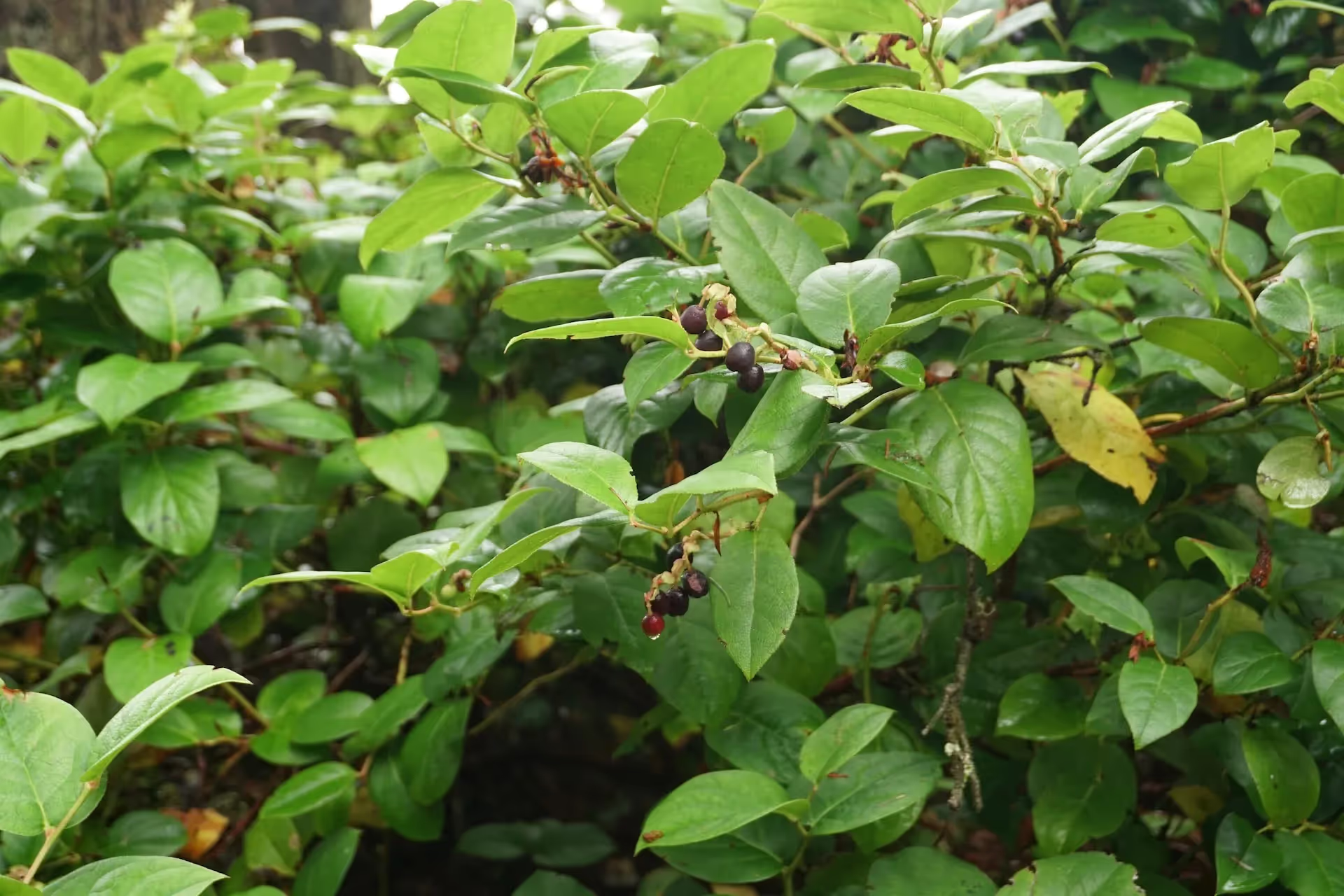
Salal (Shade to Part Shade):
Salal is well-adapted to shaded areas in its native habitat. Try to get to the sweet (and sometimes sticky) berries before the birds do.
Salmonberry (Part Shade to Full Sun):
Salmonberries are beautiful hot-pink flowers that turn into an almost-neon orange berry. Related to blackberries, salmonberries can grow in part shade to dappled sunlight areas.
Serviceberry (Full Sun to Part Shade):
Serviceberries can tolerate partial shade, and will often mingle in on the edges of forests with other trees. Very tasty fruit that makes for a great snack while foraging.
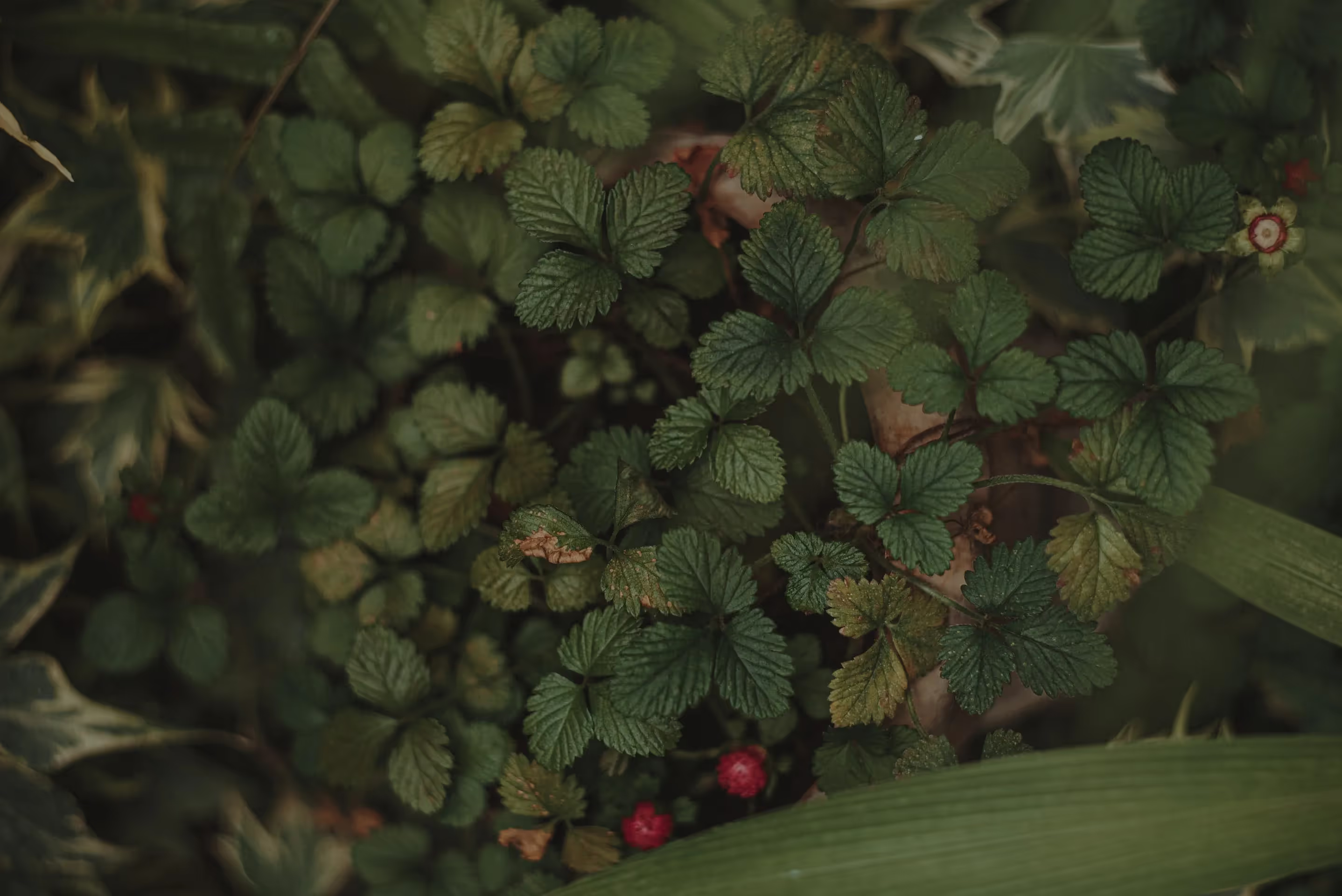
Strawberry (Full Sun to Part Shade):
Strawberries can thrive in diverse light conditions, including partial shade. Look for alpine and wild varieties for the most shade tolerance.
Thimbleberry (Part Shade to Full Sun):
Thimbleberries are found naturally in part-shade. They do will in the understory of shaded areas in the garden.
Uva Ursi (Full Sun to Full Shade):
Uva Ursi is adaptable to a range of light conditions, from full sun to full shade. Its berries are reminiscent of cranberries. This plant is often utilized in herbal medicine.
Wild Pear (Full Sun to Part Shade):
Wild pear trees can tolerate partial shade, and as Twisted Tree Farm notes, they can also be more disease resistant. A great way to have a fruit tree in a part shade landscape.
In conclusion, transforming your low-light garden into an abundant food haven is not only possible; it's a journey filled with surprising variety.
From shade-loving veggies like beans and beets to herbs that thrive in filtered light, there's an impressive range of edibles to explore.
Embrace the unique advantages that shade offers, such as cooler temperatures and less frequent watering, and you'll discover that your shaded garden can be just as productive as one bathed in full sun.
It's definitely worth growing a garden, no matter how many hours of sunlight your yard gets!